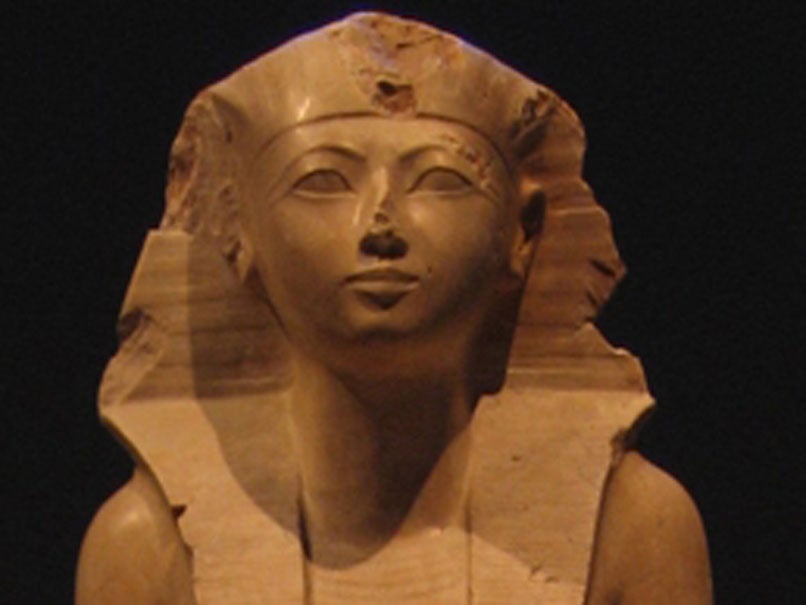The female pharaoh so successful, Egypt turned her into a man

Your support helps us to tell the story
From reproductive rights to climate change to Big Tech, The Independent is on the ground when the story is developing. Whether it's investigating the financials of Elon Musk's pro-Trump PAC or producing our latest documentary, 'The A Word', which shines a light on the American women fighting for reproductive rights, we know how important it is to parse out the facts from the messaging.
At such a critical moment in US history, we need reporters on the ground. Your donation allows us to keep sending journalists to speak to both sides of the story.
The Independent is trusted by Americans across the entire political spectrum. And unlike many other quality news outlets, we choose not to lock Americans out of our reporting and analysis with paywalls. We believe quality journalism should be available to everyone, paid for by those who can afford it.
Your support makes all the difference.Hatshepsut was no ordinary Egyptian ruler.
After her husband died, Hatshepsut didn’t just keep the “throne” warm for her stepson to come of age. She became a pharaoh in her own right, and in doing so, became one of ancient Egypt’s first female rulers. While there were likely two or three female pharaohs during the “dynastic” period, Hatshepsut is considered to be the most successful; she ruled for at least 15 years and was a prolific builder.
After her death, her stepson assumed full kingship and most mentions of Hatshepsut’s name and likeness were destroyed, erased and replaced. Over the past several decades, researchers have uncovered and described more and more evidence of her reign as a female ruler during the 1400s B.C.
Last week, Egypt’s Ministry of Antiquities announced a discovery connected to Hatshepsut that provides greater insight into the life story of this remarkable female pharaoh. The German Archaeological Institute uncovered blocks that likely belonged to one of her buildings.
Early in her career, Hatshepsut was depicted as a woman, but later on her likeness was of a powerful, muscular ruler who had the same false beard that male pharaohs would wear. The blocks found by archaeologists on Egypt’s Elephantine Island are different. Believed to have been part of a waystation for the deity, Khnum, several of the blocks show Hatshepsut as a woman.
“The building must therefore have been erected during the early years of her reign, before she began to be represented as a male king,” the antiquities ministry said in a release. “Only very few buildings from this early stage of her career have been discovered so far.”
Hatshepsut’s husband, Thutmose II, died in 1479 B.C. His infant son, Thutmose III, was designated as the next ruler and Hatshepsut became the boy’s co-regent. From a 2009 National Geographic feature:
As Thutmose III grew up, Hatshepsut’s depiction changed. As Smithsonian Magazine noted, “the formerly slim, graceful queen appears as a full-blown, flail-and-crook-wielding king, with the broad, bare chest of a man and the pharaonic false beard.”
Hatshepsut was quite the builder; her mortuary temple at Deir el-Bahri is considered an ancient architectural marvel. And her reign was characterized by peace and advances in art and culture.
But for many years, many of her marks on Egyptian culture and society had been scrubbed.
“In the reign of Thutmosis III, all mentions of her name were erased and all representations of her female figure were replaced by images of a male king, her deceased husband Thutmosis II,” Egypt’s antiquities ministry said in a release, using an alternative spelling for Thutmose III. “The newly discovered building thus adds to our knowledge of the early years of Queen Hatshepsut and her engagement in the region of Aswan.”
Copyright: Washington Post
Join our commenting forum
Join thought-provoking conversations, follow other Independent readers and see their replies
Comments